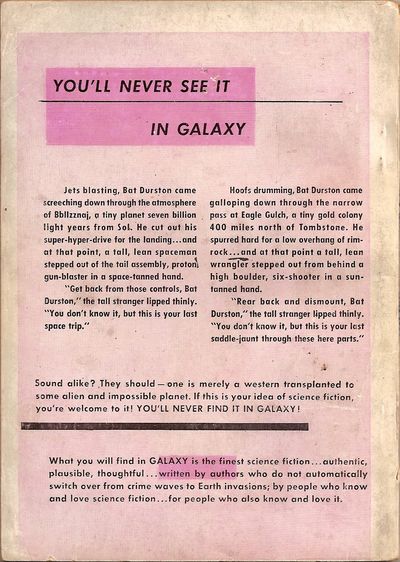Lord of Thunder — Andre Norton
Review by J.D.N. ~ April 17, 2015
The Return of Hosteen Storm
1962’s Lord of Thunder is a sequel to The Beast Master, picking up pretty much where The Beast Master left off. Hosteen Storm has lost his birth planet and his people [1], but Arzor has given him a new home, a new family, and a new life.
(spoiler warning)
The first hint that there are great events brewing is when all of the native Norbie tribes announce an unprecedented truce and abandon their usual haunts to march off upcountry. They claim that the migration is for a religious purpose, but will not reveal the exact nature of that purpose even to humans on good terms with the Norbies. It’s not necessarily true that extraordinary events are bad news, but given that the last extraordinary event was driven by a Xik incursion, a number of the human settlers view these developments with great concern.
Of course, there’s always room for situations to get even more complicated….
Lars Widders’ son is one of the walking wounded from the late war, a man so badly damaged by his experiences that he has spent many months in a rehab facility on Allpeace. The young man just can’t catch a break; on his way home from Allpeace, his ship hits a hyper mine.
At least two life-boats escaped the wreck. Survivors from the lifeboat picked up by rescuers report that the other lifeboat, the one that young Widders was on, made a landing on Arzor, deep in a region called the Blue. This is bad news for young Widders and his companions, because not only is the Blue inhabited by Norbie cannibals, it’s considered taboo territory by the civilized Norbies. Humans are warned to stay out. If anyone wants to rescue the other lifeboat, they are doing to have to do so without Norbie help. Better yet, without the local Norbies knowing anything about it.
Despite his better judgment, Hosteen is roped into the attempt to find and rescue young Widders. He and his companions soon discover that the Blue is yet another region of Arzor riddled with relics of the mysterious lost race of starfarers who once occupied Arzor. Worse yet, these relics seem to be in functioning condition.
And someone is using the relics to make himself a god….
~oOo~
Interesting detail: Astra (from The Stars Are Ours! And Star Born) is mentioned in passing, so this might be part of that time line. Norton could have reused the place name, but … whoever heard of someone doing that?
This book suffers from the same basic issue as the first one, which is that that this is basically a Western transposed into science fiction. Norton doesn’t put much effort into distancing her story from conventional Westerns. Much of the terminology (like native “medicine”) is lifted pretty much verbatim from old-fashioned Wild West novels, as is the idea of an outside agitator riling up the natives with technological hokum.
Well, maybe not hokum; the alien relics represent a very high level of technology (with tricks like teleportation that the humans in Norton novels never seem to master) and the fellow who controls those relics has a lot of power thanks to that. Pity about his mania and hubris. Those traits generally end badly for the person displaying them.
I will say that I was a bit surprised to find that Hosteen Storm fails abjectly to rescue young Widders. This is due to any oversight or fault on Storm’s part; young Widders is dead before the expedition sets out. As it turns out, Arzor has much worse problems than the one missing soldier. Young Widders does serve a useful purpose in inspiring Storm to take a close look at what is going on in the Blue.
I imagine that this novel has its fans (perhaps those who view it as their formative Norton), but for me the Bat Durston elements [2] relegate this to minor Norton status. Still worth a look for Norton completists; I would imagine that this would be easy to find in local used bookstores or on ABE books.
1: He muses at one point that he is the last native speaker of Navajo in the universe. It did occur to me that he could teach his kids but that would require the existence of women, for which there is very little evidence in this book.
2: For those of you unfamiliar with the famous—well, once famous—ad in the late, great Galaxy Magazine of the 1950s:



